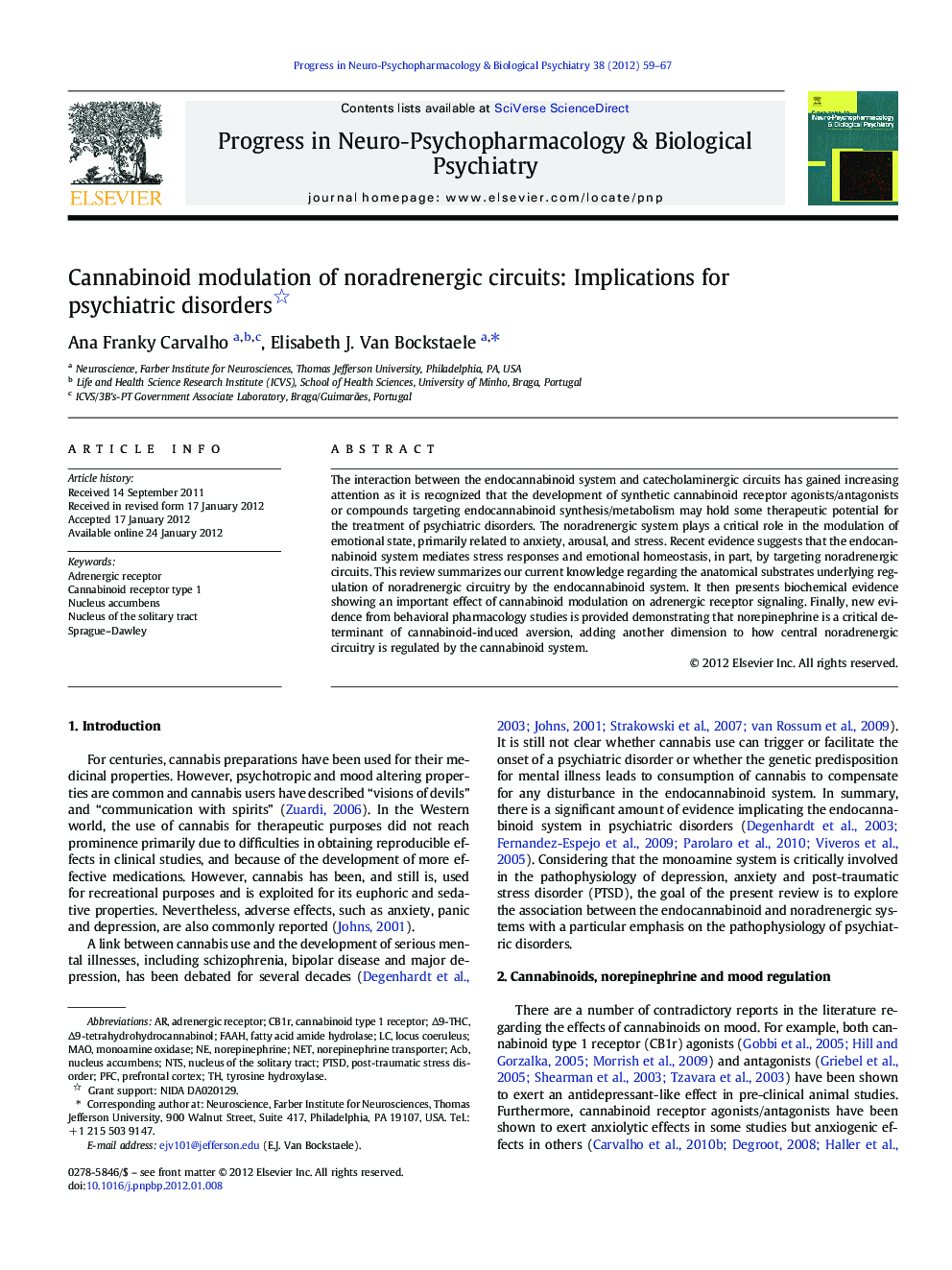| Article ID | Journal | Published Year | Pages | File Type |
|---|---|---|---|---|
| 2565063 | Progress in Neuro-Psychopharmacology and Biological Psychiatry | 2012 | 9 Pages |
The interaction between the endocannabinoid system and catecholaminergic circuits has gained increasing attention as it is recognized that the development of synthetic cannabinoid receptor agonists/antagonists or compounds targeting endocannabinoid synthesis/metabolism may hold some therapeutic potential for the treatment of psychiatric disorders. The noradrenergic system plays a critical role in the modulation of emotional state, primarily related to anxiety, arousal, and stress. Recent evidence suggests that the endocannabinoid system mediates stress responses and emotional homeostasis, in part, by targeting noradrenergic circuits. This review summarizes our current knowledge regarding the anatomical substrates underlying regulation of noradrenergic circuitry by the endocannabinoid system. It then presents biochemical evidence showing an important effect of cannabinoid modulation on adrenergic receptor signaling. Finally, new evidence from behavioral pharmacology studies is provided demonstrating that norepinephrine is a critical determinant of cannabinoid-induced aversion, adding another dimension to how central noradrenergic circuitry is regulated by the cannabinoid system.
► Cannabinoid actions on noradrenergic systems have significant behavioral implications. ► Limbic norepinephrine is a critical determinant of cannabinoid-induced aversion. ► Cannabinoids modulate noradrenergic transmission in both noradrenergic nuclei and target regions. ► Modulation of norepinephrine by cannabinoids is state dependent and varies under conditions of stress.
